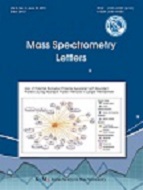
- P-ISSN 2233-4203
- E-ISSN 2093-8950

Products containing any one or more of 26 fragrance allergens likely to cause contact allergies, are required under the 2008 domestic cosmetic law to be labeled when their concentrations exceed a certain range. This study focuses on the comparison and development of analytical methods based on headspace-solid phase micro extraction (HS-SPME) and liquid-liquid extraction (LLE) methods followed by GC-MS/MS for 24 of the fragrance allergens excepting for two natural materials in water samples. Using the developed HS-SPME method, 15 of the 24 fragrance allergens were analyzed and 9 compounds which have relatively low logKOW values (below about 2.5) were not extracted, and the correlation coefficient (r²) of the calibration curve for quantification showed linearity of 0.9969 or more, and the method detection limits (MDL) and the limits of quantification (LOQ) were 0.078 ~ 0.582 μg/L and 0.261 ~ 1.940 μg/L, respectively. In the case of using the optimized LLE method, all 24 fragrance allergens were analyzed, and the correlation coefficient (r²) of the calibration curve for quantification showed linearity of 0.9957 or more, MDL and LOQ were 0.020 ~ 0.138 μg/L and 0.065 ~ 0.440 μg/L, respectively.
Scientific Committee on Consumer Safety (SCCS). (2012). Opinion on Fragrance Allergens in Cosmetic Products (10-). 15th Plenary Meeting.
Godayol, A. (2015). . Chemosphere, 119, 363-.
Becerril, E. (2010). . Talanta, 83, 464-.
Celeiro, M. (2014). . J. Chromatogr. A, 1344, 1-.
Godayol, A. (2015). . Chemosphere, 125, 25-.
Becerril-Bravo, E. (2010). . Chemosphere, 81, 1378-.
서창동. (2010). 낙동강 수계에서의 인공 사향물질 검출 특성. 대한환경공학회지, 32(6), 615-624.
이인정. (2011). 국내 하천수 및 하수처리장 유입 방류수의 합성머스크화합물 오염실태 조사. 대한환경공학회지, 33(11), 821-826.
서창동. (2012). 정수처리용 생물활성탄 공정에서의 인공 사향물질의 제거 특성. 대한환경공학회지, 34(3), 195-203.
서창동. (2014). 교반막대 추출법과 GC-MS/MS를 이용한 수중의 합성 향물질류 분석. 대한환경공학회지, 36(6), 387-395. http://dx.doi.org/10.4491/KSEE.2014.36.6.387.
Martinez, C. (2013). . Talanta, 116, 937-.
Divisova, R. (2015). . Acta Chromatogr, 27, 509-.
Lamas, J. P. (2009). . Anal. Bioanal. Chem, 394, 1399-.
Niederer, M. (2006). . J. Chromatogr. A, 1132, 109-.
Villa, C. (2007). . J. Pharma. Biomedi. Anal, 44, 755-.
Rey, A. (2015). . J. Chromatogr. A, 1404, 95-.
Desmedt, B. (2015). . Talanta, 131, 444-.
Vallecillos, L. (2012). . Talanta, 99, 824-.